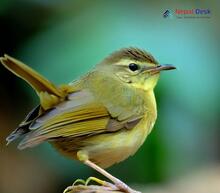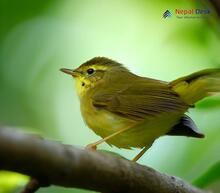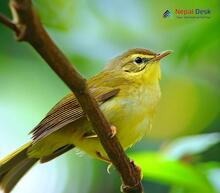Nepal is a treasure trove for bird enthusiasts. With its rich biodiversity, this stunning country is home to numerous species of birds. Among these remarkable creatures, the Horornis genus stands out as particularly fascinating. If you've never heard about Horornis before or simply want to learn more, you've come to the right place. This article will provide an in-depth profile of this unique bird genus found primarily in Nepal.
A Glimpse into the Horornis Genus
Horornis is a genus of small insectivorous birds belonging to the family Cettiidae. These birds are typically characterized by their brownish-green plumage and their distinctive songs. Known for their energetic and melodious singing abilities, Horornis species are widely admired among birdwatchers and nature enthusiasts alike.
Distributed across various regions of Asia, members belonging to the Horornis genus can be found in diverse habitats including forests, grasslands, and wetlands. However, it is within Nepal's rich and varied landscape where several Horornis species thrive.
Notable Species found in Nepal
While the Horornis genus comprises numerous species distributed across different territories in Asia, let’s focus on a few key representatives that can be found throughout Nepal:
The Brownish-flanked Bush Warbler (Horornis fortipes)
This species inhabits scrub and forest edges at high elevations in the Himalayas. Emitting a musical trill as its song, this small bird is often challenging to spot due to its camouflaged appearance.
The Aberrant Bush Warbler (Horornis flavolivaceus)
More commonly found at lower elevations, this charming bird frequents undergrowth and scrubby vegetation. With distinct calls consisting of short chirps followed by a buzzing noise, the Aberrant Bush Warbler is an unmistakable presence within its natural habitat.
Conserving Horornis and their Habitats
Like many bird species, the Horornis genus faces various threats that can negatively impact their populations. Deforestation, habitat loss, and climate change are some of the most significant issues threatening these bird species' survival. Hence, efforts to conserve their habitats and understand the ecological requirements of these birds are essential for their continued existence.
Birdwatching enthusiasts and nature conservationists play a vital role in raising awareness about these unique bird species by documenting their presence and distribution throughout Nepal. Furthermore, ecotourism initiatives focused on birdwatching can contribute positively to both environmental preservation and local economies.
In Conclusion
With a multitude of fascinating traits and a melodic soundtrack accompanying their presence, the Horornis genus represents a captivating aspect of Nepal's avifaunal diversity. As we continue to explore and appreciate these remarkable birds, let's not lose sight of the importance of preserving their habitats to ensure they can thrive in the wild for generations to come.




